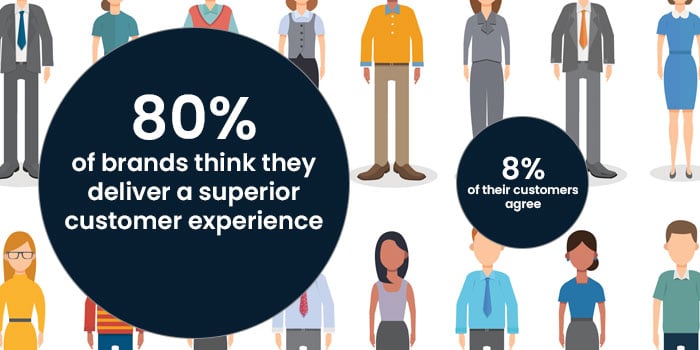Today, when customers can so easily choose to do their shopping wherever they want, deep and genuine customer relationships are needed to survive in the market in the long run. Yet, most e-commerce retailers are basing their strategic decisions on sales reports alone. Monitoring and comparing sales figures and trends, down to the hourly results, is the main concern and driving force for many companies. Sales figures are twisted and turned. Quick fix activities are invented to meet the sales budget of the week.
The monitoring of e-commerce sales figures is important, but it’s not a model for long-term sustainable business success. Companies that focus on sales above all else are thinking too short-term. If you want to create a commerce business that is future-proof, you need to be looking at customer satisfaction metrics.
How Does Customer Satisfaction Deliver Long-Term Results?
It’s critical to understand that increased traffic, sales and repurchases are not goals. They are results generated by insight-driven, conscious and well-prioritized efforts, delivered by employees at all levels.
Commerce businesses should put more effort into understanding what is actually generating these results. A good starting point to driving these results includes gathering material to understand customers' driving forces and actual experiences and using the insights as a basis for constant improvement work. It’s important to understand that customer experience and satisfaction are not things you can fix with an activity plan or an isolated project. Many companies are oftentimes unaware of how their customers perceive them and how to increase customer satisfaction to create long-term results.
As you’ll see, prioritizing customer satisfaction as a core KPI requires a shift in the way your business thinks and acts every day.
Why CSI Must Be a Priority for Management Teams
CSI, Customer Satisfaction Index, is the most important key figure for any commerce business.
In terms of internal attention and action plans, it should be superior to traffic and sales figures, because CSI is linked to the company's brand promise, offer and the way customers are treated. It affects the entire organization, culture, delivery capacity and competitiveness of the company. As such, CSI is a matter for the entire management team.
Some companies already measure CSI or NPS (Net Promotor Score), but only a few of them are actively using it as a basis when working towards a sharper customer experience and better customer relations. In most cases, CSI/NPS remains an isolated figure or indicator. The results are rarely analyzed in terms of what customers actually think about the experience itself, interaction points in customer journeys, and why they gave a positive or negative response.
In a recent market survey from, Bond Brand Loyalty found that 80% of the companies surveyed thought they were delivering a really good customer experience. However, only 8% of their customers agree!
In a market survey from 2019, Bond Brand Loyalty found that 80% of the companies surveyed thought they were delivering a really good customer experience. The problem is ... Only 8% of their customers agree!
As a true customer ambassador, I can't help but question why many companies keep working in the same old ways and don't realize that successful business will always be about good relationships!
 Why Aren't Companies Using CSI Results In Their Strategies?
Why Aren't Companies Using CSI Results In Their Strategies?
The reason most commerce businesses aren’t using CSI results in their strategic improvement work is mainly due to a lack of one or more of the following components:
Customer Promise
Everything starts with this, but often companies haven’t spent time developing their customer promises. A customer promise shouldn’t be confused with brand value. The promises should be formulated from a customer perspective, be concrete, clearly described and transparent. Everyone within the business should be able to answer the questions: why do we have them, what do they mean and how should we act in order to deliver and live by them every day?
Customer Centricity
Being customer-centric is not something you become just by talking about it. It is a strategic change of direction and requires clear goals, concrete action plans and focused work, and should always involve and engage the entire organization. Customer centricity is a culture - a way to live and act all the time – which means it needs buy-in from everyone in the business.
Responsibility
CSI work is often led by a CRM manager or someone in a similar position in the company who tries to make their voice heard, develop insights and drive the improvement work to the best of their ability. This is a good start, but CSI results are, as previously stated, larger than one person's responsibility. It should involve the entire organization and the management team should have the ultimate responsibility.
Methodology
Often several different systems are used to collect customer insights. They also have poor integrations to the CRM system. The result is inconsistent measurement methods and incomparable figures. You may measure an average NPS value but have no insight into what you actually measure, how and why. The old systems often have a limited functionality that does not support an action-based methodology which in turn results in a lot of manual work.











